
Washington, DC—Carnegie Science geochronologist Jennifer Kasbohm is a rock and mineral detective seeking to resolve mysteries from Earth’s vast geologic history. But what can a detective do when a case has been cold for millions of years? She collects evidence from rocks around the world and brings them to her lab for investigation. Using several geochemical techniques, Kasbohm’s study of isotopes provides crucial details that may help solve these cold cases from deep in Earth’s past.
As a geochronologist, Kasbohm’s unique contribution is providing new ages for old rocks. In a new publication in Geology, she recently demonstrated that it is possible to apply a technique that is considered the “gold standard” in geochronology to volcanic ashes in some of the most precious rock samples that have ever been obtained—sampled from kilometers below the bottom of the ocean floor by scientific ocean drilling. The interval Kasbohm chose to investigate serves as an important analog for the current planetary crisis of anthropogenic global warming.
“We know that our world is in a period of sustained warming due to carbon dioxide and other greenhouse gases that are released into the atmosphere by burning fossil fuels,” Kasbohm explained. “To better understand the effects of climate change and predict what a recovery might look like if we are able to get pollution under control, it’s crucial to study warm periods during Earth’s geologic history.”
Although Kasbohm performed this research prior to her arrival this spring at Carnegie Science’s Earth and Planets Laboratory, it is highly relevant to the goals of the newly launched Climate and Resilience Hub.
This initiative, of which Kasbohm is a member, aims to leverage scientific and technical expertise from across the institution to advance climate and sustainability. One of the early focus areas identified by Hub participants is to study volcanic activity as a window into both atmospheric climate processes and ecosystem resilience in the oceans
A warming event:
One such historical warming interval, called the Miocene Climate Optimum (MCO), which occurred between 14 and 17 million years ago, featured global mean surface temperatures that were between 5.3 and 11.5 degrees Celsius warmer than today. It’s been theorized that this was due to elevated levels of atmospheric carbon dioxide released by volcanism.
In particular, scientists have hypothesized that an immense amount of carbon dioxide was released by the eruption of vast lava flows across the Pacific Northwestern United States, which created a feature called a large igneous province.
To envision the scale of this eruption, Kasbohm recommends: “Imagine Washington and Oregon being completely covered with a vertical kilometer of lava!”
Large igneous provinces, a focus of Kasbohm’s research, have erupted several times in Earth’s history and can be correlated with major climate shifts and mass extinction events, although this particular event, called the Columbia River Basalt Group (CRBG), was not quite so catastrophic.
In her past research, Kasbohm constructed a new timeline for the eruptions of the CRBG. While prior studies suggested that CRBG eruptions were ongoing throughout most of the MCO, Kasbohm’s work showed that the CRBG erupted twice as fast as previously thought.
“To understand if we have correlation between these events, let alone claiming that volcanism caused warming, I realized I needed to confirm the timeline of the Miocene Climate Optimum”, Kasbohm said.
She accomplished this using isotope research techniques.
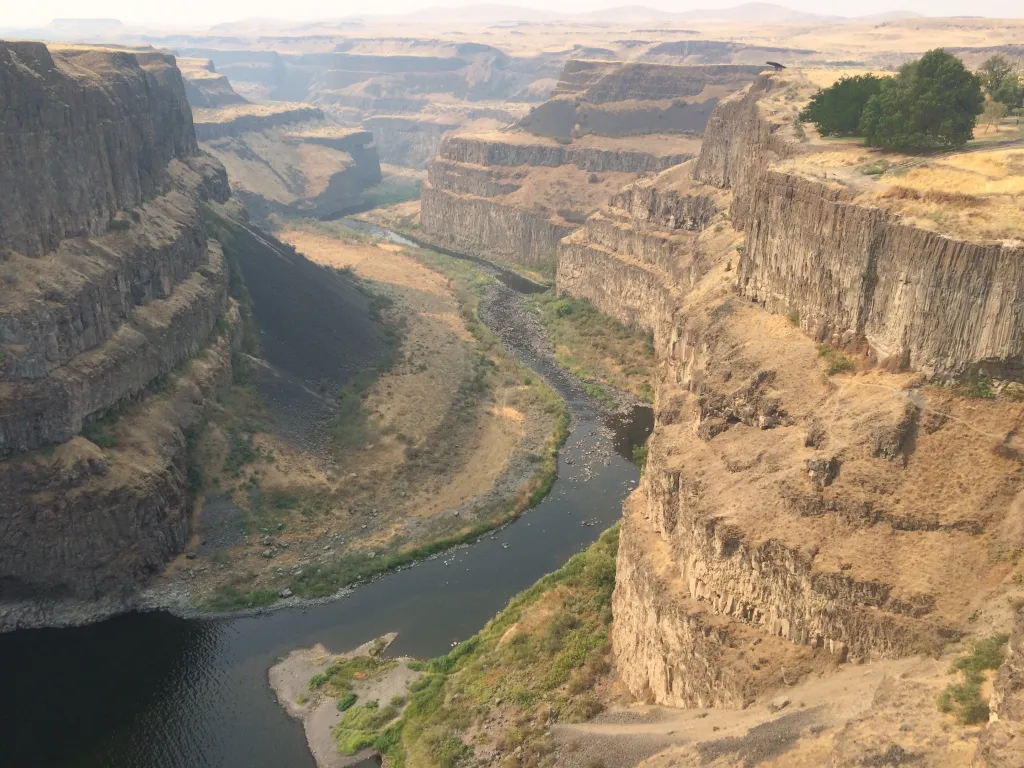
Palouse Falls State Park in Washington state presents an excellent exposure of lava flows of the Wanapum Basalt, the second-youngest formation of the Columbia River Basalt Group. (Photo credit: Jennifer Kasbohm).
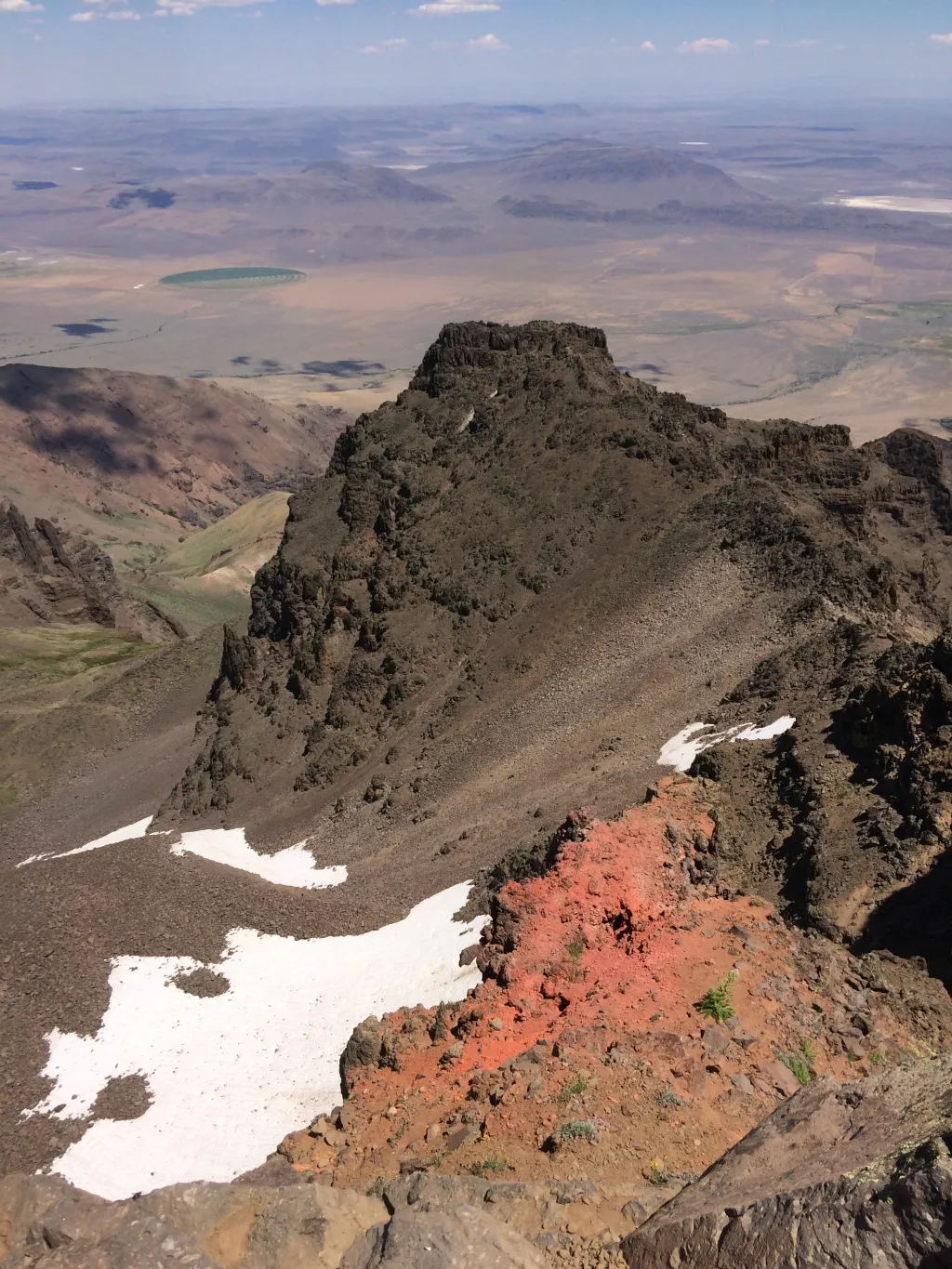
The red layer found between two basalt flows on top of Steens Mountain in Oregon yielded zircons that were dated to constrain the age
of the oldest formation of the Columbia River Basalt Group (Photo credit: Jennifer Kasbohm).
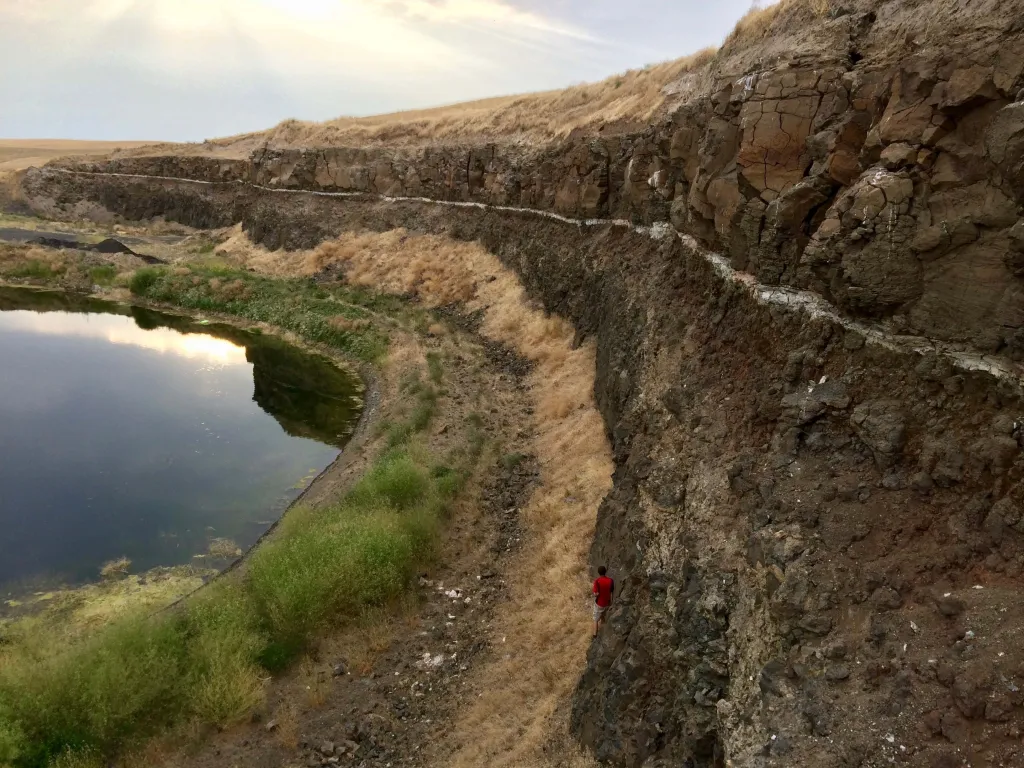
The volcanic ash found between two basalt flows yielded zircons that were dated to constrain the age of a magnetic field reversal and the second-youngest formation of the Columbia River Basalt Group. Princeton University's Josh Murray provides scale (Photo credit: Jennifer Kasbohm).
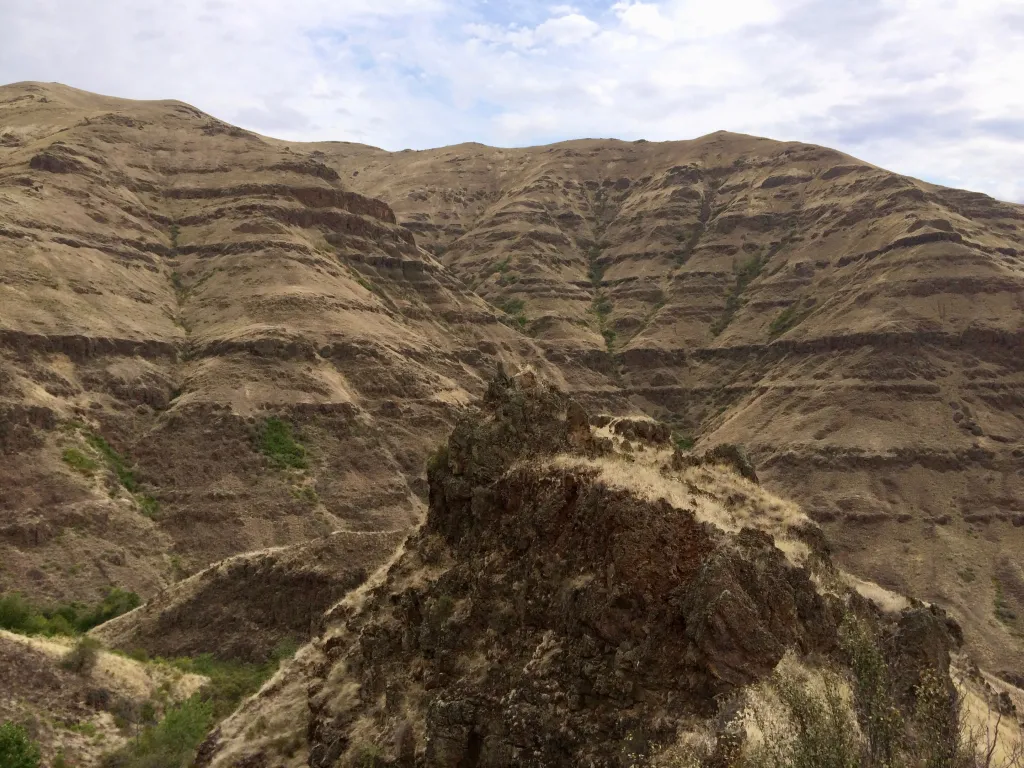
A dike (forground) in the Chief Joseph Dike Swarm was one ofmany that sourced the Grande Ronde Basalt, the most voluminous
formation of the Columbia River Basalt Group (Photo credit: Jennifer Kasbohm).
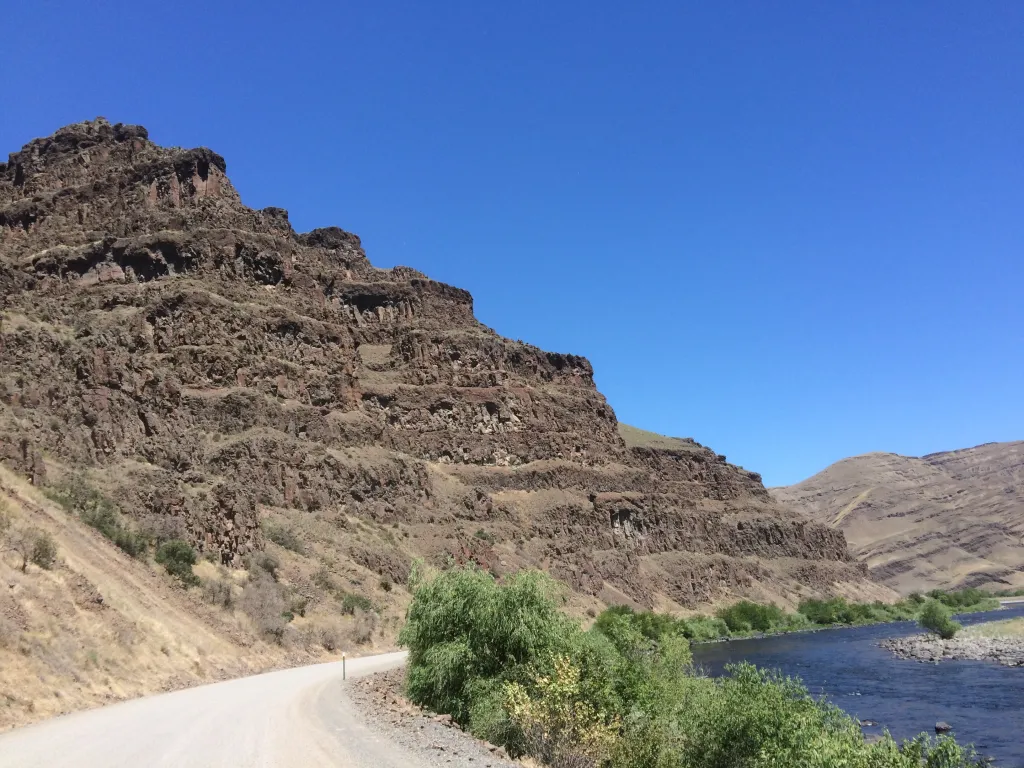
This pile of lava flows is part of the Grande Ronde Basalt, the most voluminous formation of the Columbia River Basalt Group. (Photo credit: Jennifer Kasbohm).
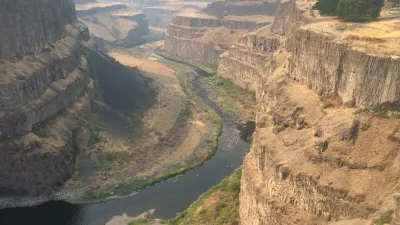
Palouse Falls State Park in Washington state presents an excellent exposure of lava flows of the Wanapum Basalt, the second-youngest formation of the Columbia River Basalt Group. (Photo credit: Jennifer Kasbohm).
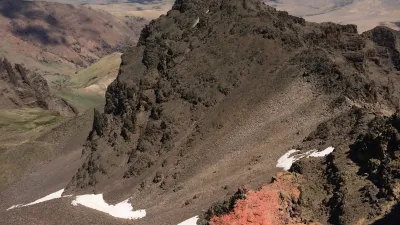
The red layer found between two basalt flows on top of Steens Mountain in Oregon yielded zircons that were dated to constrain the age of the oldest formation of the Columbia River Basalt Group (Photo credit: Jennifer Kasbohm).
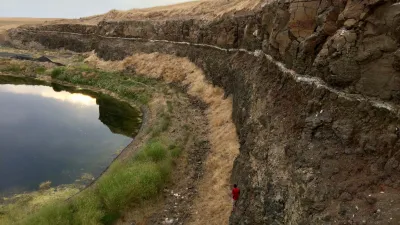
The volcanic ash found between two basalt flows yielded zircons that were dated to constrain the age of a magnetic field reversal and the second-youngest formation of the Columbia River Basalt Group. Princeton University's Josh Murray provides scale (Photo credit: Jennifer Kasbohm).
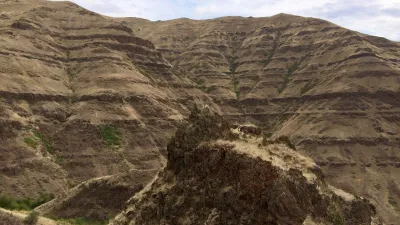
A dike (forground) in the Chief Joseph Dike Swarm was one ofmany that sourced the Grande Ronde Basalt, the most voluminous formation of the Columbia River Basalt Group (Photo credit: Jennifer Kasbohm).
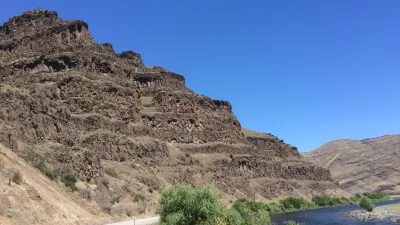
This pile of lava flows is part of the Grande Ronde Basalt, the most voluminous formation of the Columbia River Basalt Group (Photo credit: Jennifer Kasbohm).
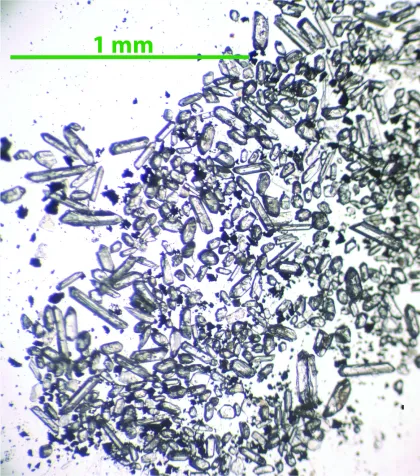
What are isotopes?
Every chemical element on the periodic table is distinguished from the others by the number of protons in its nucleus. However, an element can have a range of neutrons present in the nucleus alongside its protons. Atoms of the same element with different numbers of neutrons are referred to as isotopes.
Sometimes, the number of neutrons present in its nucleus can make an isotope unstable. To gain stability, the isotope releases energetic particles, which alters its number of protons and neutrons, transmuting it into another element. This process, known as radioactive decay, takes place at a known rate. So if Kasbohm measures both the parent and daughter isotopes—in her work, uranium and lead—she can calculate an age for geologic samples.
“These radioactive isotopes can be used as fingerprints that help scientists like me trace the histories of the material in which they are found,” Kasbohm said.
And most detectives would struggle to find the material from which Kasbohm extracts her isotopes: a microscopic mineral called zircon, which measures 0.1 mm across or less!
How does it work? Zircon!
When zircon crystals form in a rock, they incorporate small amounts of uranium and start the stopwatch for the radioactive decay process. Millions of years later, Kasbohm extracts and measures multiple pairs of uranium and lead isotopes to generate an age for each zircon grain. Kasbohm specializes in a technique that produces the most accurate and precise ages for rocks of this age and will soon be bringing this capability to a new lab at Carnegie Science’s Earth and Planets Laboratory.
When Kasbohm used uranium-lead zircon ages to produce her new, shorter timeline for the CRBG, she found that it did not align well with the start of MCO warming. But she was surprised to find that no one had used this same “gold-standard” technique to provide ages for the MCO.
Why not? Many of Earth’s best records for ancient climate change come from deep-sea sediments that are obtained by drilling hundreds of meters down into the seafloor. But the drill bit has a 6-centimeter diameter, meaning the samples Kasbohm studied were just a fraction of the size of what she would normally be able to collect on land.
“Looking for zircons in rocks can be like looking for a needle in a haystack, so I had been worried I may not find them in these small samples,” she said.
But she soon did and proceeded to date nine different volcanic ash layers across the MCO, which she further studied using isotopes of carbon and oxygen, which were extracted from the sediments in between the ashes.
New insights:
Prior to Kasbohm’s work, only a small number of MCO records had detailed timelines, and these were obtained on the basis of small changes in Earth’s orbit going back in time—not using mineral stopwatches like zircons. Kasbohm’s zircon-based timeline not only agrees well with other timelines for the MCO, but also provides some “ground-truthing” that the orbit-based approach is valid—a relief because not every sedimentary record contains zircons.
Kasbohm’s new timeline shows that the CRBG was erupting during the warmest phase of the MCO, suggesting that volcanism contributed to these elevated temperatures. However, her new work still indicates that warming began a few hundred thousand years before surface volcanism. It is possible that carbon dioxide was released as magma built up in Earth’s crust prior to CRBG eruptions, but Kasbohm said more research is necessary to test this hypothesis.
“We are still investigating what was the primary driver of MCO warming,” she said.
Lasting impact:
Unfortunately for researchers across the geosciences, the ship responsible for drilling deep-sea sediment cores was recently decommissioned and years or decades might pass before it can be replaced. To learn more about Earth’s climate history, geoscientists will need new ways to work with sediment cores that have already been collected, even if some of them are imperfect.
Kasbohm explained: “My approach of dating zircons provides the timeline that is key to unlocking the information stored in these old cores and expanding our knowledge of Earth’s past climate.”
Thanks to this rock and mineral detective, maybe some other cold cases will start to warm up.
